Graffiti Street or Werregarenstraat, in Ghent is a legal space for graffiti art. The area hosts work by known artists and amateurs alike. Ghent’s art scene features over 140 murals and includes designated “tolerance zones” for graffiti. The city also hosts art festivals and showcases both modern and traditional art.
Popular murals in Ghent include “The Rabbits” by ROA, a black and white piece. “The Traveller” by A Squid Called Sebastian depicts a cloaked figure. “Faces of Ghent” by Steve Locatelli focuses on diverse portraits. “The Giant Pitta” is a collaborative work featuring styles of local artists ROA, Bué the Warrior and Resto.
Key neighborhoods for graffiti in Ghent are the historic city center, Dok Noord and areas like Brugse Poort and Ledeberg. Each has unique concentrations of street art.
Prominent streets for graffiti include Werregarenstraat in the city center and Tweebruggenstraat in Brugse Poort. Other locations like Pantserschipstraat and Koopvaardijlaan also feature high concentrations of art.
Ghent designates “tolerance zones” for legal graffiti. Werregarenstraat is the most notable, allowing a range of styles and drawing tourists for its ever-changing artwork.
Artist ROA, known for black and white animal murals, has significant works in Ghent, including “The Rabbits”, focusing on life and death cycles.
Contents
- What is the “Graffiti Street” in Ghent?
- What are the most popular graffiti murals in Ghent?
- What neighbourhoods of Ghent are popular for graffiti art?
- What streets of Ghent are popular for graffiti art?
What is the “Graffiti Street” in Ghent?
The “Graffiti Street” in Ghent is an alleyway called Werregarenstraat located in the heart of the city. For over 20 years, this street has been a legal spot for graffiti artists to paint freely, resulting in its nickname “Graffiti Street”. The walls are constantly being repainted, so the art is always changing. Anyone can come paint graffiti here, though there is an unwritten rule to respect better quality artwork. It’s a mix of some impressive large murals by renowned artists like Roa, Amos and SCKS next to a lot of messy scribbles and tagging. Every year the city paints over the walls and invites artists back to start fresh. Graffiti Street has become an attraction, with tourists coming to see the ever-evolving art. It represents the city’s openness to street art in certain designated zones.
What is Ghent known for in terms of art?
Ghent is known for having a thriving street art scene, with over 140 murals scattered across the city. The city government takes a balanced approach, designating certain “tolerance zones” where graffiti is allowed while also offering to remove unwanted art. This has led to colorful, impressive works by international artists like Roa plus homegrown talents like Bué The Warrior. Ghent invites artists from around the world to festivals like “Sorry, Not Sorry” to create public art. Beyond street art, Ghent has a rich cultural history as Flanders’ art capital, from famous medieval painters like Jan van Eyck to museums showcasing surrealism and contemporary works. The city embraces both traditional and modern artistic expressions.
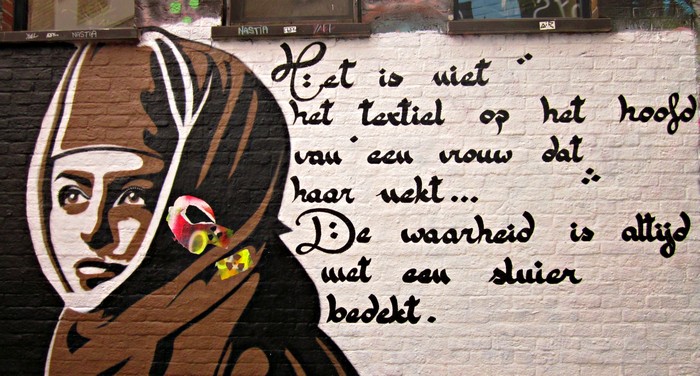
Translation: “It’s not the fabric on a woman’s head that holds her down… The truth is always covered with a veil”. (In Dutch it rhymes)
What are the most popular graffiti murals in Ghent?
Ghent is filled with striking street art, but a few murals stand out as particularly iconic and seem to capture the creative spirit of the city. The most popular graffiti murals in Ghent are “The Rabbits” by ROA, “The Traveller” by A Squid Called Sebastian, “Faces of Ghent” by Steve Locatelli and the “The Giant Pitta”
- “The Rabbits” by ROA. One of the most renowned is “The Rabbits” by Belgian artist ROA. This photorealistic black and white depiction of rabbits along a brick wall has become symbolic of Ghent’s street art scene. ROA often paints native animal species and aims to represent cycles of life and death in his muted color murals. “The Rabbits” was completed in 2009 and was the last mural ROA painted in his hometown before moving on to create similar works globally. The rabbits exemplify his highly detailed monochrome animal style, which locals would come to associate closely with Ghent.
- “The Traveller” by A Squid Called Sebastian. Another beloved mural is “The Traveller” by A Squid Called Sebastian, also from Belgium. Painted in bright colors on a waterside building, it captures a lone cloaked figure strolling pensively along. The mural aims to portray the wandering spirit of street artists and the visual influences they pick up across cities. A Squid Called Sebastian frequently depicts masks and traveling in his vibrant, playful works. This particular piece quickly became iconic along Ghent’s canalside due to its meaningful connection to the transient lives of urban creatives.
- “Faces of Ghent” by Steve Locatelli. Steve Locatelli is the artist behind the collaborative mural “Faces of Ghent” located under the stairs below the Visit Ghent tourism office. His signature style combines realistic portraiture with vivid colors, often focusing on women’s faces. For this piece, Locatelli partnered with graffiti artist Eyes B to paint a cross-section of ethnically diverse characters who symbolize the many “faces” of Ghent. The luminous reddish-purple portraits bring the wall to life in an area heavily trafficked by tourists.
- “The Giant Pitta”. Another popular mural called “The Giant Pitta” resulted from a collaboration between locals ROA, Bué the Warrior and Resto. Their joint mural features a mix of Roa’s realism, Bué’s cartoons and Resto’s upbeat characters. These artists put Ghent street art on the map and often painted together around the city earlier in their careers. Though the mural is large, it is located on a nondescript wall easy to miss. For those in the know, it has become a favorite work fusing the styles of some of Ghent’s most influential urban artists.
What neighbourhoods of Ghent are popular for graffiti art?
Ghent’s incredible street art spans far across the city, but certain neighborhoods stand out for having exceptional concentrations of murals, large “tolerance zone” areas and various art hubs. The most significant neighbourhoods of Ghent popular about their graffiti art are the The historic city center of Ghent (with Werregarenstraat, know as “Graffiti Street”), the Dok Noord, the “Brugse Poort, Gentbrugge, Ledeberg” areas and “Rabot and Wondelgem”.
The historic city center is a prime spot to view graffiti, home to the famous Werregarenstraat “Graffiti Street” alley and scattered works on picturesque buildings. Many tourists start their explorations here along the canal. The Graffiti Street zone allows anyone to paint legally, leading to a mix of styles. The nearby Patershol neighborhood is also popular for cafes, restaurants and art including pieces by Bue, Resto and others.
Another top neighbourhoods is the Dok Noord creative cluster located in former industrial warehouses along the waterfront. Urban art covers the walls inside the DOK cultural space, the abandoned concrete factory next door and the surrounding area. Dok Noord contains works by prolific locals like ROA plus inviting artist residency studios. Nearby, Kapow is an additional creative hotspot in a former printing factory that functions as artist studios and hosts events.
The neighborhoods around Brugse Poort, Gentbrugge and Ledeberg form another street art nexus, especially along Tweebruggenstraat. Walls and buildings here are densely packed with murals from festivals. Ledeberg contains the abandoned factory Skeletfabriek, a concealed spot with stunning graffiti inside. Gentbrugge features a strip of renowned pieces along the tram line.
Further afield, the zones near Rabot and Wondelgem contain various legal art walls. Rabot has a clustered site with graffiti by Cee-Pil, Bué and others. Wondelgem has its own Hall of Fame plus multiple large playground murals by artists like Resto. Across the river in Gentbrugge more works abound, like the Hospitalhof site with a collaborative bicycle mural.
What streets of Ghent are popular for graffiti art?
There are certain streets in Ghent that contain high visibility clusters of impressive murals and major “tolerance zones” where art is legal. Find below the most popular streets of Ghent with graffiti art.
- Werregarenstraat. One obvious hotspot is Werregarenstraat in the city center, nicknamed “Graffiti Street”. This alley functions as an open air gallery where anyone can paint freely. The constantly changing walls feature established artists alongside amateurs. Nearby Hoogpoort also connecting the historic downtown has additional scattered graffiti.
- Tweebruggenstraat. Tweebruggenstraat is another street packed with vibrant murals in the districts of Brugse Poort and Ledeberg. During festivals, organizations bring creators here to transform faded walls and facades into an outdoor museum. Notable murals by Aryz, Sam Scarpulla and locals abound.
- Pantserschipstraat and Verbindingsstraat. The streets comprising Dok Noord near the waterside such as Pantserschipstraat and Verbindingsstraat are rife with art in and around DOK cultural center and an abandoned factory. Large silos are covered with paintings by ROA. Riverside P. Kluyskensstraat contains the B.I.Y skatepark with a bright collaborative mural.
- Koopvaardijlaan near Wondelgem. Koopvaardijlaan near Wondelgem holds the city’s second largest “Hall of Fame” legal painting area. The entire length of this street is layered with graffiti by Cee-Pil, Jamie Answord and more. Nearby Wellingstraat also offers legal walls covered in colorful pieces.
- Rerum Novarumplein and Goudsbloemstraat. The Rabot neighborhood has two parallel streets with much street art – Rerum Novarumplein and Goudsbloemstraat. A vacant lot between them serves as studio space for artists like Cee-Pil and is dense with graffiti.
- Heidestraat. In Ledeberg, Heidestraat and the intersecting Metselaarstraat feature multiple large murals including abstract styles. The busy Overpoortstraat here also has various graffiti along its length.
What are the legal “tolerance zones” where artists can paint graffiti in Ghent?
Ghent has designated “tolerance zones” where graffiti is permitted, including Werregarenstraat (Graffiti Street), Kiezelviaduct, Denderlaan and Grindbakken. These areas allow artists to freely paint without legal repercussions. Werregarenstraat stands out as it is centrally located, attracts many artists and features a wide range of styles from top murals to amateur tagging. Every year the walls are repainted, so art is constantly changing. Anyone can paint with no judgement, leading to a funky lived-in look. This alley also draws tourists who come specifically to see the legal graffiti in action.
What is unique about the “tolerance zone” Werregarenstraat?
The “tolerance zone” of Werregarenstraat, also known as Graffiti Street, stands out among the handful of legal graffiti areas in Ghent thanks to its central location, the sheer amount and variety of artwork and its constantly evolving nature. Werregarenstraat is an alley right in the heart of the city, connecting two main streets and shopping areas Hoogpoort and Onderstraat. Its visibility and high foot traffic from locals and tourists make it a popular gathering spot for artists. The city first opened the street to legal graffiti in 1995 during the Ghent Festivities, inviting artists to paint within a defined project. This designation has turned the otherwise nondescript alley into an attraction known citywide and beyond as a go-to destination for colorful street art.
Unlike some tighter regulations in other urban art zones, there is a great deal of creative freedom on Werregarenstraat. Anyone can paint whatever they wish, without needing permission or facing vandalism charges. This openness leads to an immense variety of works by amateurs, aspiring artists and big names alike. The walls and even the ground along the alley are layered with intricate murals, stylized masterpieces and simple tags. There can be awe-inspiring aerosol works by renowned graffiti writers next to crude scribbles or hip hop crew symbols painted by teens. This range from stunning to messy gives the alley its lived-in, perpetually changing character.
The city embraces this flux by painting over all of Werregarenstraat once a year. They turn it into a blank canvas again, which invites artists to come leave their new mark. As such, the appearance of the graffiti zone constantly evolves. A mural that a tourist takes a photo of one day may be covered by new, unrecognizable artwork the next week. This renewal keeps the alley from ever feeling static or tired. There is always fresh inspiration for both artists and visitors who return regularly. Unlike illegal graffiti that gets removed, here the works actively rewrite themselves through this cyclical creative process. The ever-morphing art essentially captures the fluid nature of street culture itself.
What artist known for black and white animal murals has work in Ghent?
The artist Roa, who grew up in Ghent, is known for black and white murals of animals often depicting their skeletal and internal anatomy. Roa’s photorealistic images aim to represent cycles of life and death. He often paints native species like rabbits, rodents and birds on the sides of buildings in the areas he visits. Some of Roa’s most famous works in his hometown include “The Rabbits” and “Birds Nest” featuring crows and skeletal remains. His monochrome murals of animals can be spotted in cities worldwide.
What Belgian artist known for skulls and skeletons has murals in Ghent?
The Belgian street artist Klaas Van der Linden is known for murals incorporating skeletons and skulls. His paintings often feature solitary shadowy figures and ominous scenes rendered in dark colors and chiaroscuro. Van der Linden has several works around Ghent, including a self-portrait titled “Lost at Sea” depicting himself as a melancholy fisherman. He aims to capture the spirit of darkness through his macabre street art tableaus.
What movie inspired the mural “The Monument’s Men” in Ghent?
The mural called “The Monument’s Men” in Ghent was inspired by the 2014 Hollywood movie of the same name starring George Clooney and Matt Damon. The film tells the story of a WWII platoon tasked with saving important European artworks from the Nazis. The mural by Belgian artist Smates depicts soldiers emerging from a brick wall, painted when the movie was released to promote it. Though the movie title was later removed, the mural remains as a tribute to the “Monuments Men” who rescued art.
What organization offers a map to find street art locations in Ghent?
The group called Street Art Cities offers an interactive map called the “Concrete Canvas Tour” to locate street art around Ghent. They partnered with Visit Ghent tourism to catalog over 50 murals by guidance or bicycle. The self-guided tour leads to artworks outside the main tourist routes. Visitors can get the printed map at the tourism office or download online versions to find both famous pieces and hidden gems.

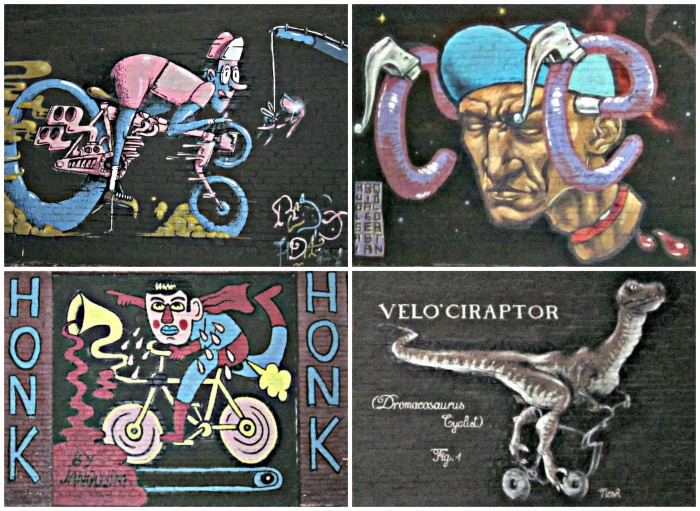
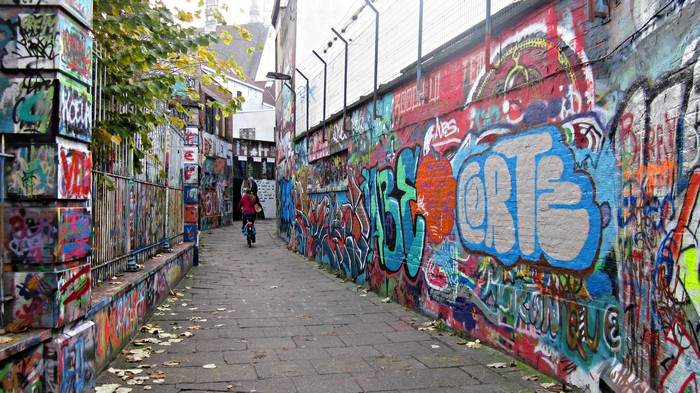
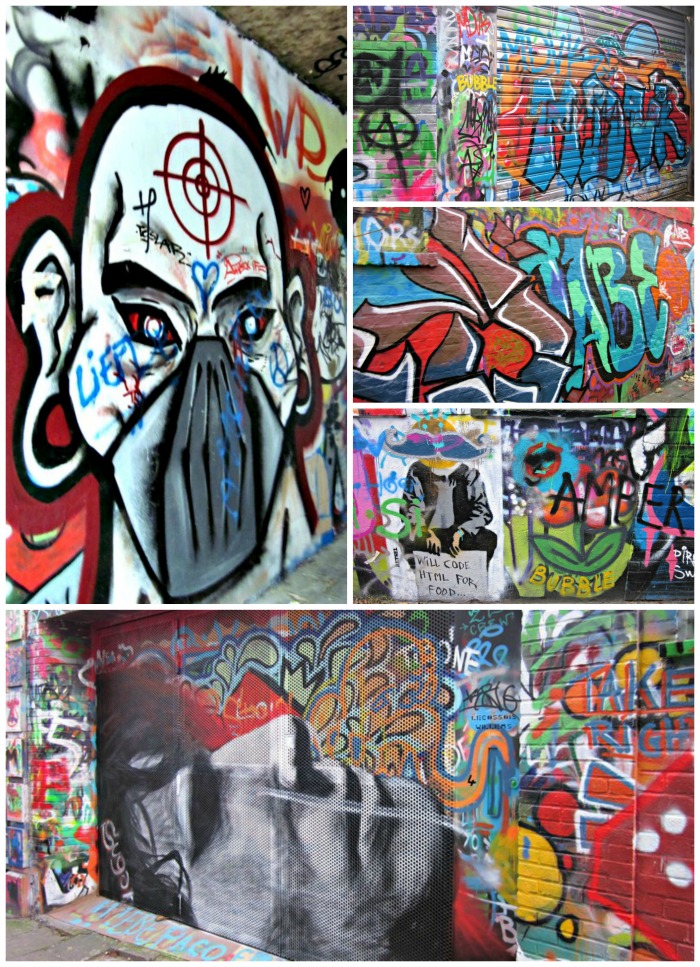
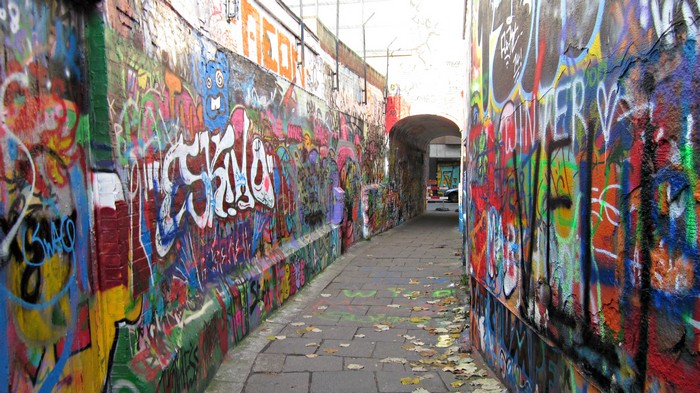
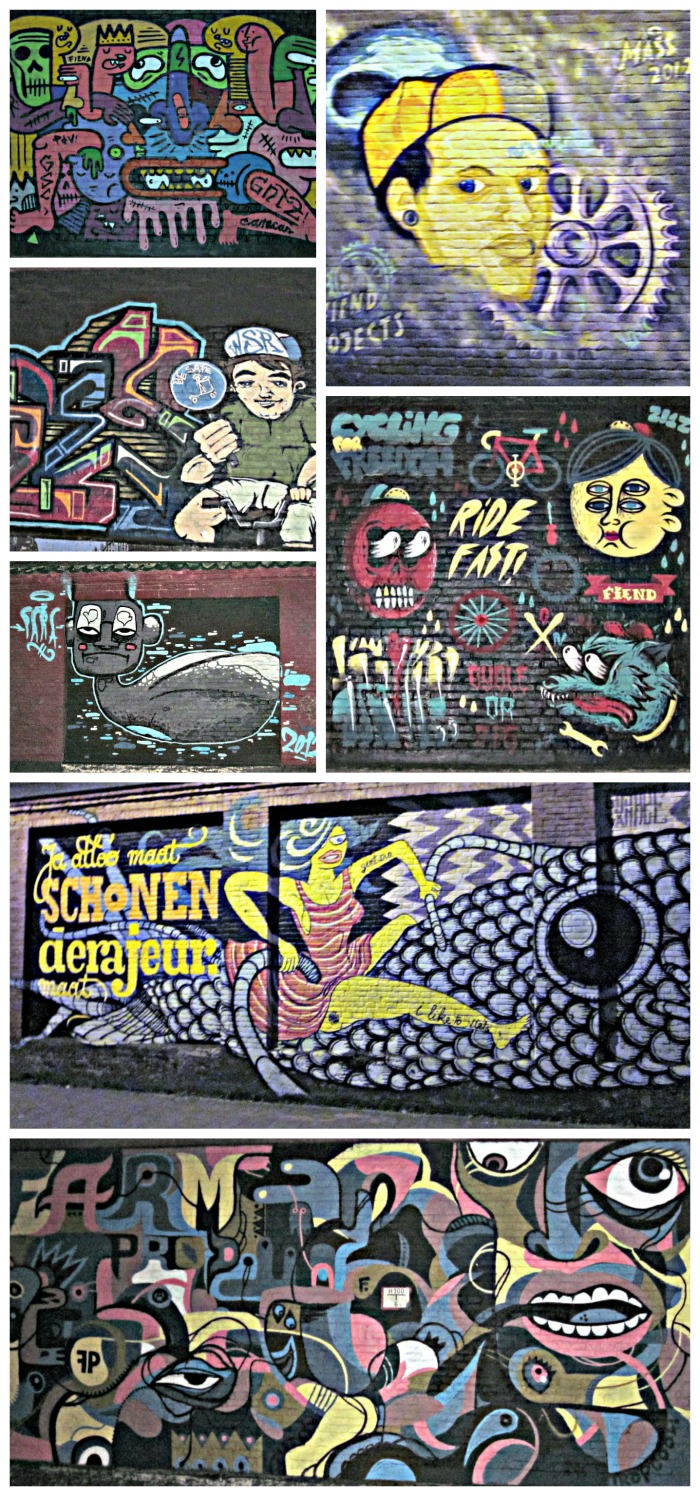

Hannah Wasielewski says
I absolutely love street art! Sometimes it can get out of hand, but there are many cities that it looks great on. When I was in Valparaiso in Chile, the city is known for being very colorful. One day the city noticed the buildings were losing a lot of color and decided to have a street art festival, bringing color back to the city! I love it!
Sofie says
That’s such a cool idea! I agree that it can either take a lot from a city, or add a lot to it depending on how it’s done and how the city deals with it. In Ghent, they seem to be doing it well:)
Katie @WorldWideVegetarian.com says
I am a big fan of street art, legal or otherwise. I had no idea that there were legal outlets in Ghent showcasing such beautiful work! I think that all cities, especially dark, grey northern cities should embrace the work of talented street artists, well done murals can really bring some livelihood to a place! I’d love to go back and visit Ghent the next time I am in Europe.
Thanks for sharing,
Katie
Tim | UrbanDuniya says
I <3 street art! I don't know how it compares, but my city of Melbourne is often spoken about as a great street art city of the world. You must visit some time!!
Sofie says
I must!
It’s on the list, but Australia is just so expensive:/
kami says
I was in Ghent 8 or so years ago and that’s definitely not how I remember the city! I so need to return as it looks like my kind of place on your pics!
Sofie says
You should go back! :)
Cyra | Gastronomic Nomad says
Great! I love street art – I hate seeing vandalism, but if paintings are planned and well thought out, legal or not, I don’t consider this vanadlism. It can really bring character to a city, or even just a neighbourhood of a city. Valencia in Spain has one neighbourhood with great street art, Barrio Carmen, I’m not sure if it’s a legal arrangement but it’s super cool. Definitely check it out if you ever go to Valencia.
Sofie says
Hey Cyra!
I’m actually hoping to get to Valencia next year, so I’ll keep that in mind.
Thanks for the tip!
kim a hazel says
I love Gent — more than Brugge — and will be back there for the first time in eight years in Sept 2015. I don’t remember any street art in Gent back then either. As for Valencia, I was there last year and it is outrageous for the amount of street art. You see it around every corner and on many garage doors. Valencia is the city that made me fall IN LOVE with street art!
Sofie says
Hey Kim, I prefer Ghent to Bruges as well. It’s more “alive” and the tourist attractions are mixed in with the “actual” city, while the center of Bruges seems to a bit to be solely there for the tourists.
vısıter says
ı can say ım acctually lıvıng ın belgıum. ı went that area before ım wrıter also. and ı wanna do some pıevce there. but ı wanna learn that how can ı do ıt there. when ı was there almöost all wall was fulled. can ı just paınt over on them or ı have to do somethıng to paınt there :S ı just wrote on google and ı found thıs page and thought maybe you guys have somethıng about that. thank you verymuch
Sofie says
Hi,
I’m afraid I can’t help you a lot with that. Better to get in touch with a graffiti artist. What I do know is that graffiti in public spaces is essentially illegal in Belgium. You can only do it on houses and other buildings if you’ve gotten permission from the owner.